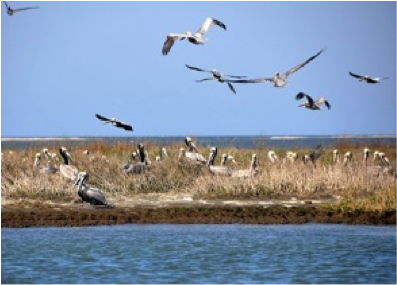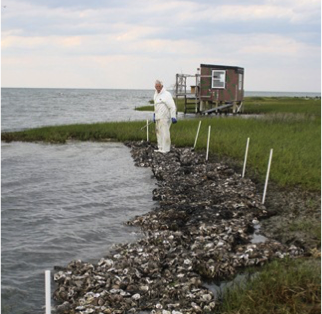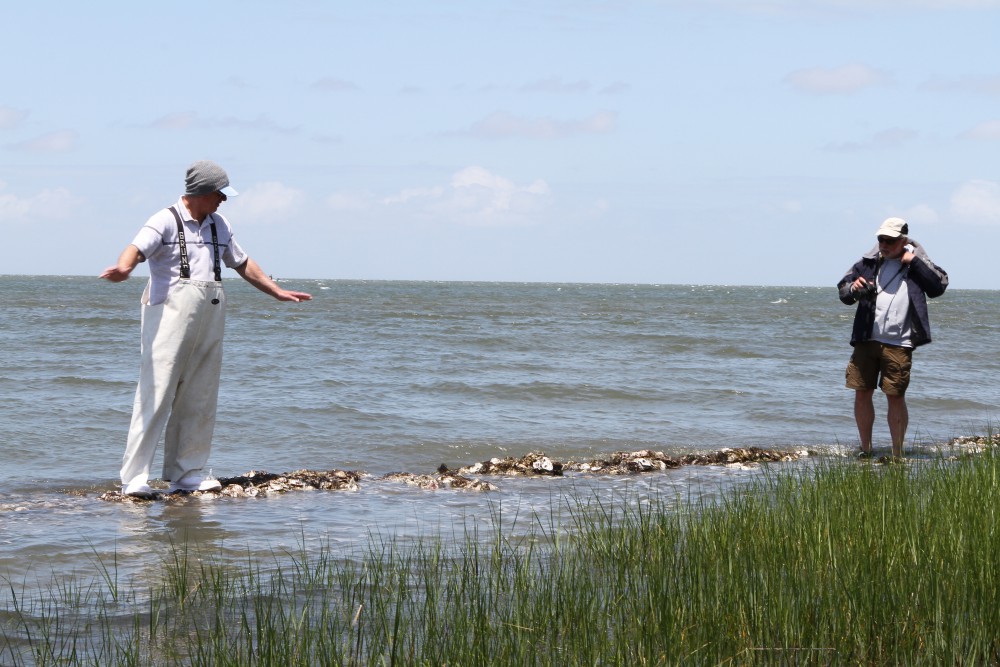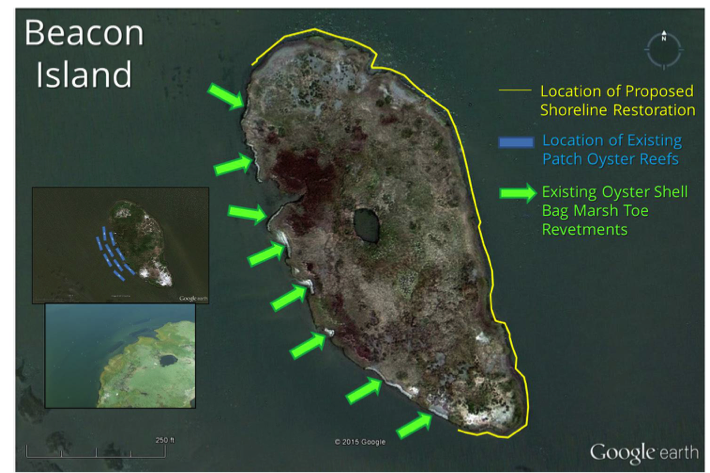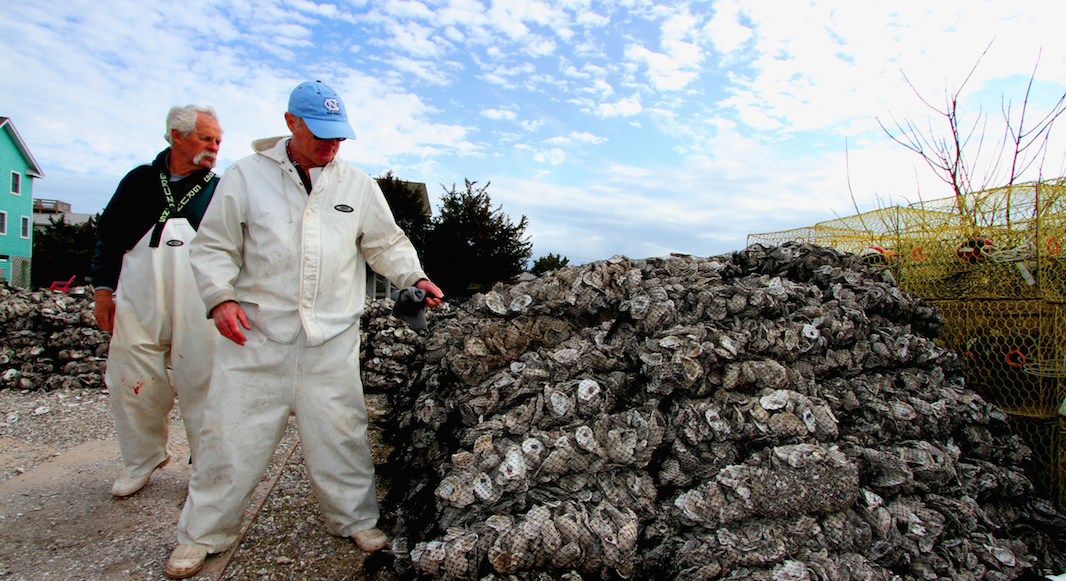Creating Oyster Habitat
While Saving the Brown Pelicans’ Home
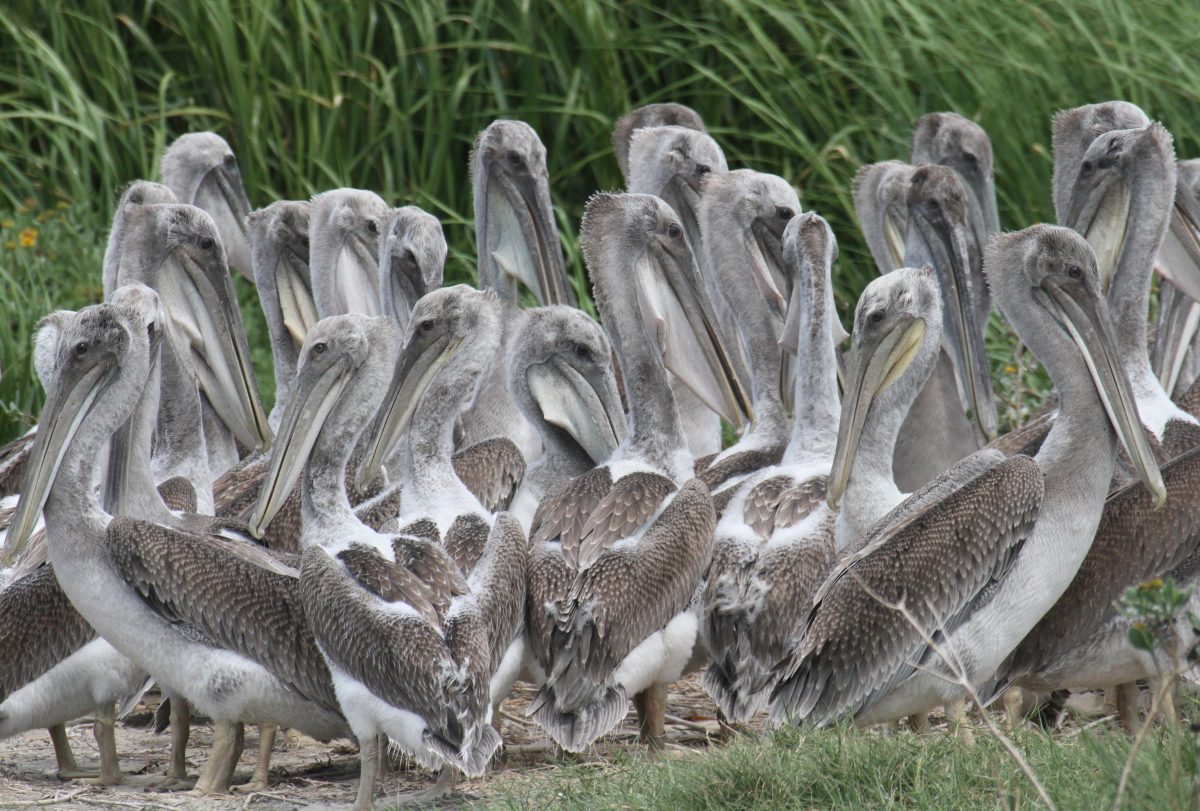
Beacon Island in Pamlico Sound is one of only nine remaining nesting sites for brown pelicans in North Carolina.
In 2014, the remote 7.5-acre island, owned by Audubon North Carolina, supported 558 nesting pairs of pelicans, about 12 percent of the state’s population. Much like similar sites around the state, the shoreline of Beacon Island is shrinking due to erosion caused by storms and boat wakes.
Historically, Beacon Island was also surrounded by oyster reefs that served as a natural buffer from wave damage. Over the years this buffer was lost due to increased oyster harvest pressure, disease, and declining water quality. To save Beacon Island, the Federation, and Audubon North Carolina received grants from TogetherGreen, National Oceanic and Atmospheric Administration, Restore America’s Estuaries, and the Southeast Aquatic Resources Partnership to help restore the eroding shoreline using oyster habitat restoration practices.
Federation staff and its partners used recycled oyster shells to create a series of marsh toe revetments and patch oyster reefs around Beacon Island that are helping to slow erosion. A total of 393.5 linear feet of marsh-toe revetments and nine patch oyster reefs were created on the western side of the island.
A marsh toe revetment is a type of living shoreline in which rocks, or in this case, bags of oyster shells, are placed up against the eroded marsh edge. Patch oyster reefs are created by placing loose oyster shells directly into the water. Not only do the shells help to reduce erosion by slowing down waves, they also provide a hard surface for oyster larvae to attach to and grow, thus creating new habitats for finfish, crustaceans, and mollusks.
